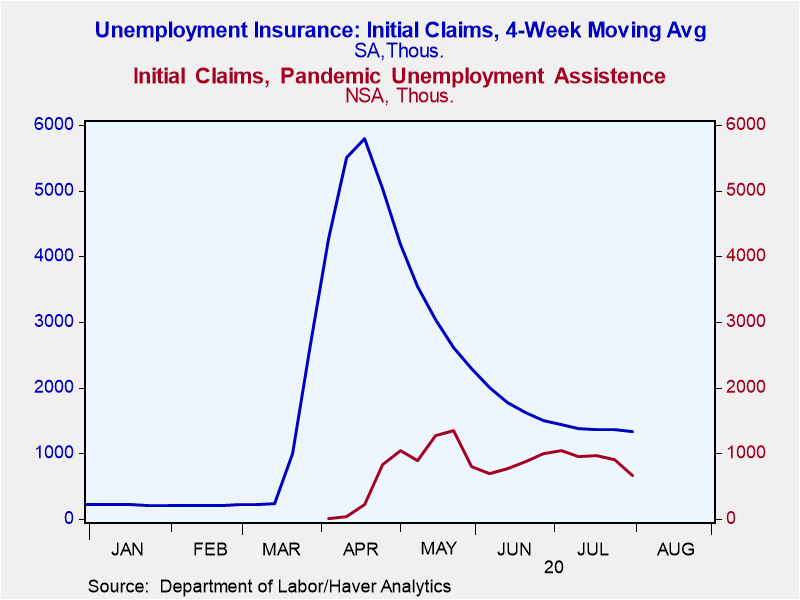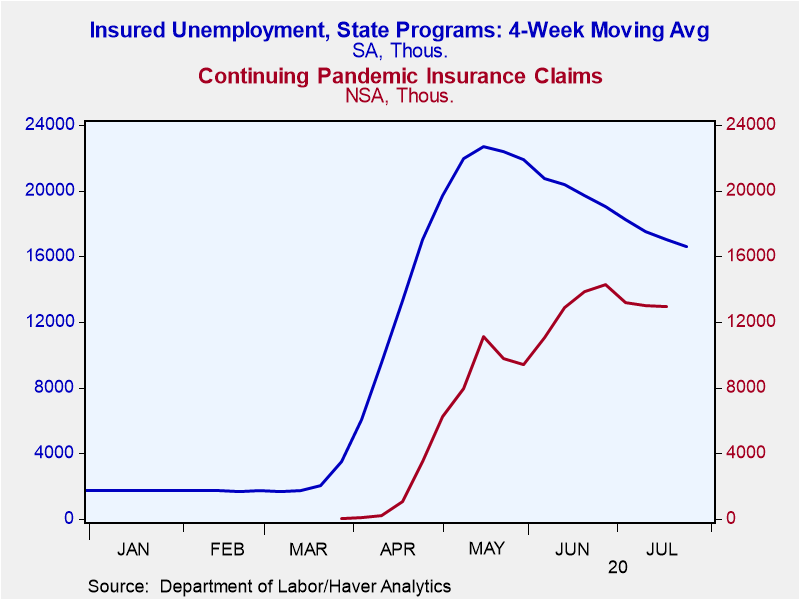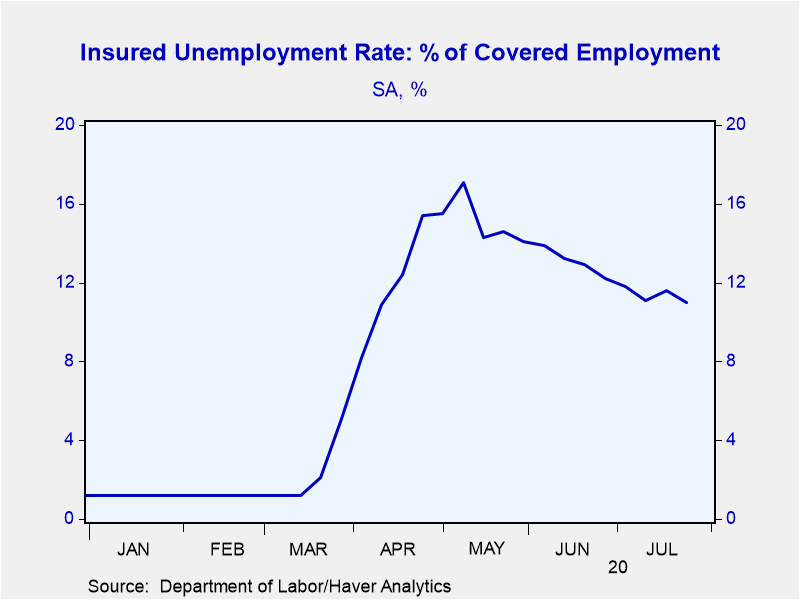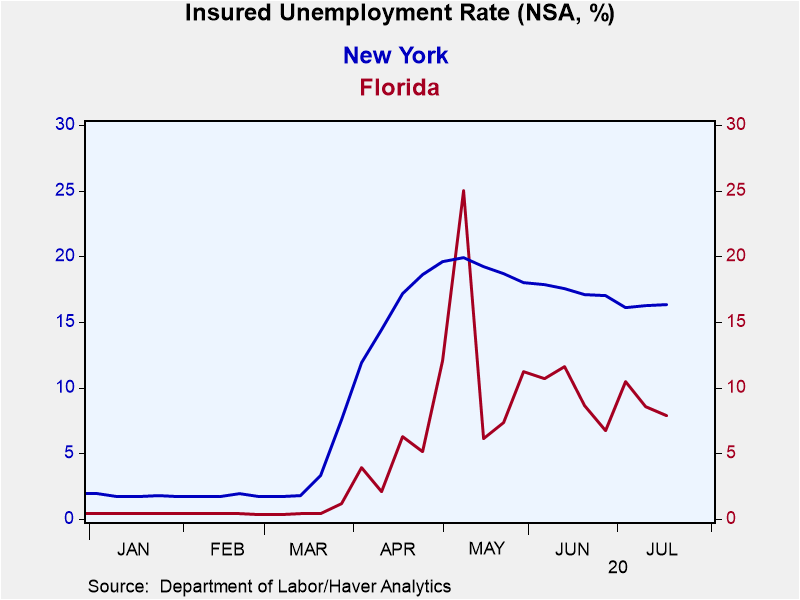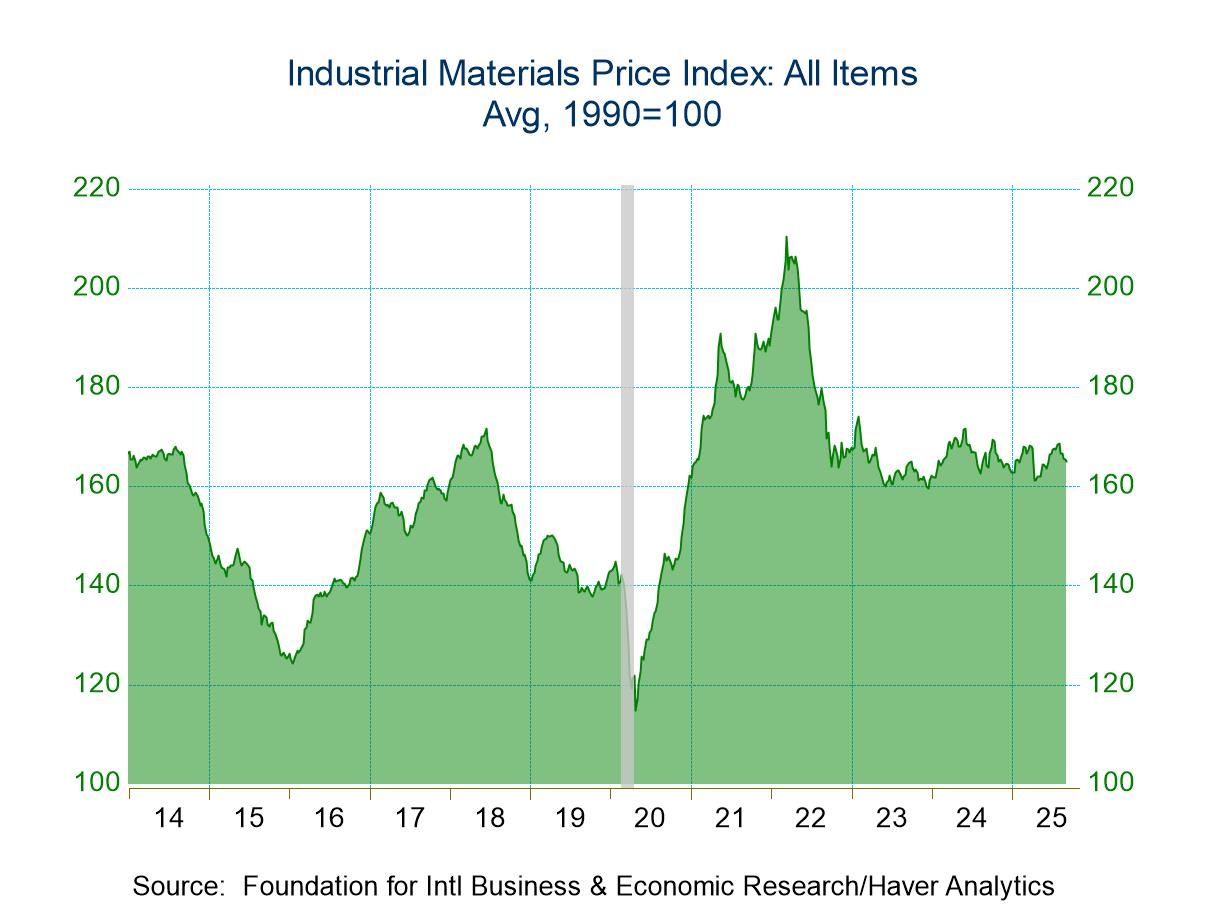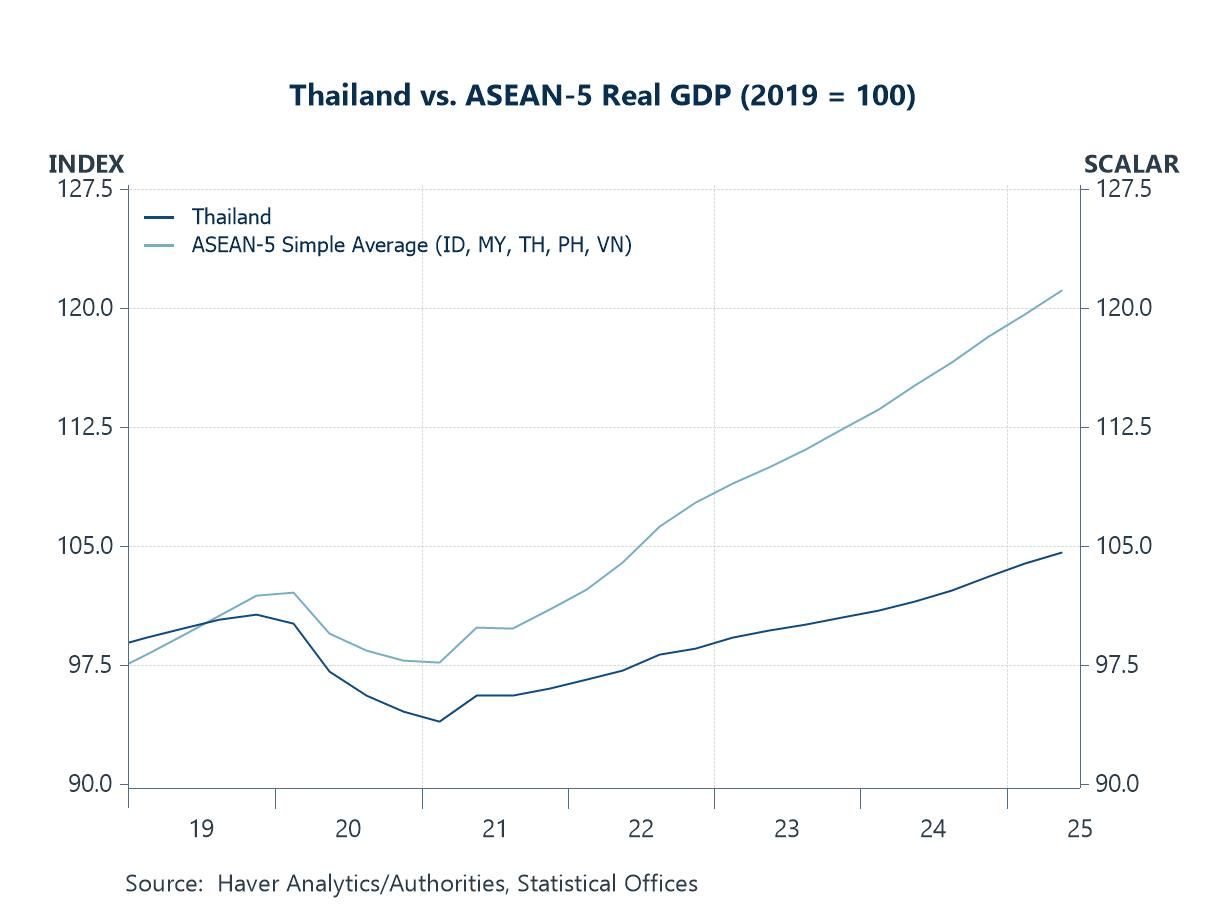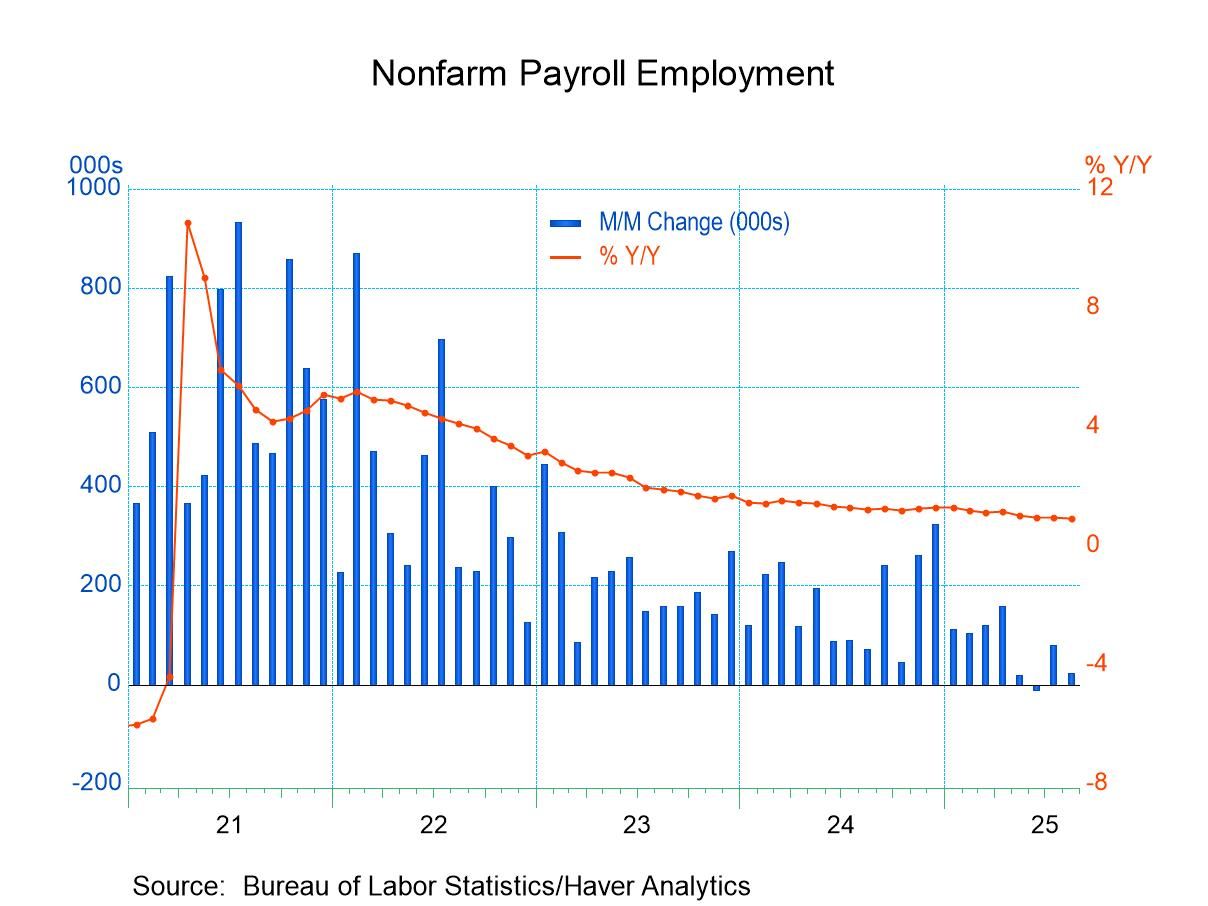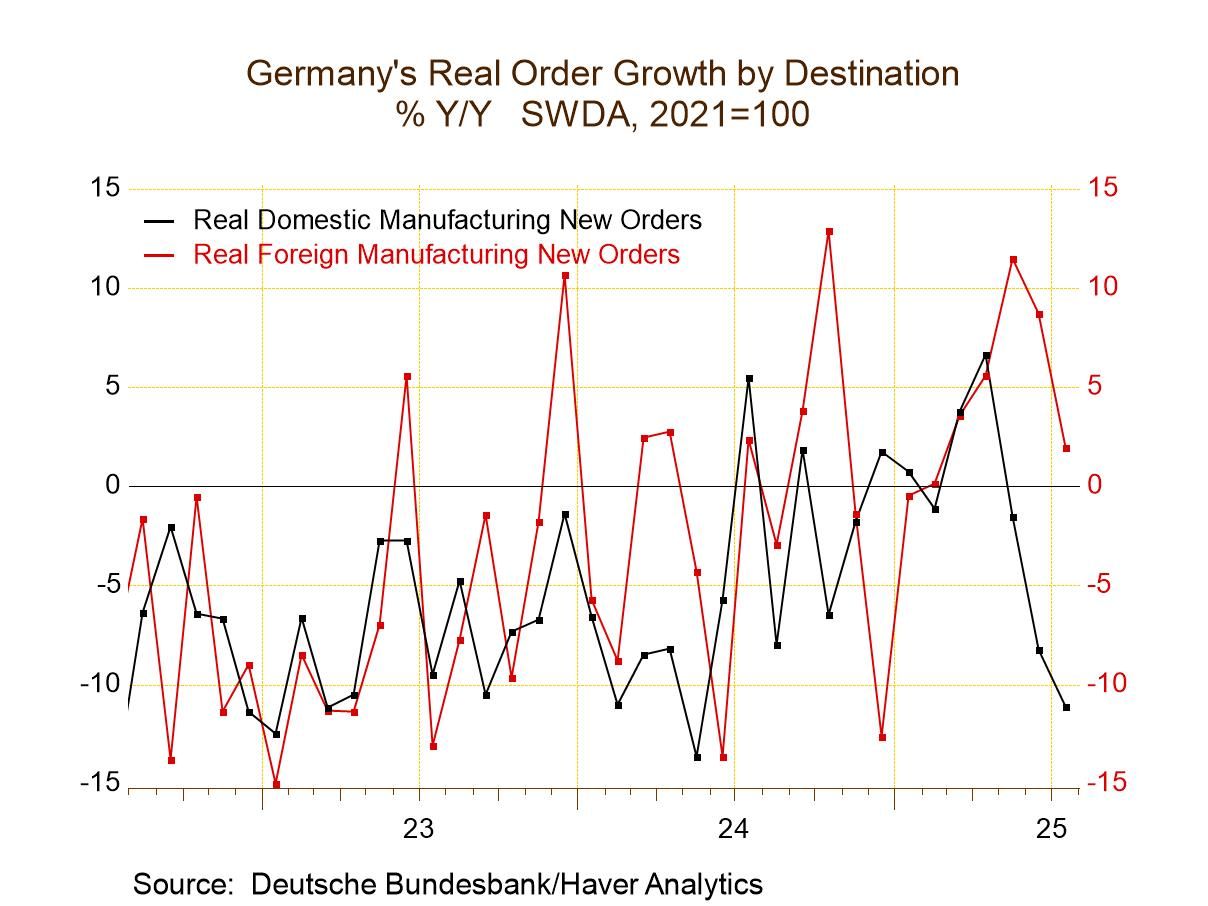 Global| Aug 06 2020
Global| Aug 06 2020U.S. Initial Claims for Jobless Insurance Benefits Decline Sharply
by:Tom Moeller
|in:Economy in Brief
Summary
• Initial claims for state unemployment benefits fall to four-month low. • Continuing claims for state programs also ease. • Insured unemployment rate declines to four-month low. Initial claims for unemployment insurance declined to [...]
• Initial claims for state unemployment benefits fall to four-month low.
• Continuing claims for state programs also ease.
• Insured unemployment rate declines to four-month low.
Initial claims for unemployment insurance declined to 1.186 million during the week ended August 1 from a little-revised 1.435 million during the prior week. The decline reversed two weeks of increase and left claims at the lowest level since the second week of March, suggesting improvement in the job market. The Action Economics Forecast Survey anticipated 1.434 million claims. The four-week moving average of initial claims eased to 1.338 million, the lowest level since late-March.
Initial claims for the federal Pandemic Unemployment Assistance (PUA) program, which covers self-employed individuals who are not qualified for regular/state unemployment insurance, decreased sharply to 655,707 in the week ending August 1 from an upwardly-revised 908,800. It was the lowest level since the third week of April. PUA claims peaked at 1.348 million in the week ending May 23. Numbers for this and other federal programs are not seasonally adjusted.
Continuing claims for unemployment insurance declined to 16.107 million during the week ended July 25 from 16.951 million in the prior week, revised from 17.018 million. Continuing PUA claims, which are lagged an additional week, decreased to 12.956 million from an upwardly revised 13.027 million. Pandemic Emergency Unemployment Compensation claims increased to 11.444 million in the week ending July 18. This program covers people who were unemployed before COVID but exhausted their state benefits and are now eligible to receive an additional 13 weeks of unemployment insurance, up to a total of 39 weeks.
The insured rate of unemployment slipped to 11.0% in the week ending July 25 from an unrevised 11.6%. This data does not include the federal pandemic assistance programs. If you include the latest data available, which is lagged one additional week, the number of continuing claims for unemployment insurance increased to 31.3 million or 19.6% of the labor force.
The state insured rates of unemployment -- which do not include federal programs -- continued to show wide variation with Idaho at just 3.6%. At the high end was Nevada at 24.9%, which has been above 20% for 13 consecutive weeks. New York also was high at 16.3% and Pennsylvania was 12.9%. Other large states were Texas at 10.8%, California at 18.1% and Florida at 7.9%. The state rates are not seasonally adjusted.
Data on weekly unemployment claims going back to 1967 are contained in Haver's WEEKLY database, and they are summarized month) in USECON. Data for individual states are in REGIONW. The expectations figure is from the Action Economics Forecast Survey, carried in the AS1REPNA database.
| Unemployment Insurance (SA, 000s) | 08/01/20 | 07/25/20 | 07/18/20 | Y/Y % | 2019 | 2018 | 2017 |
|---|---|---|---|---|---|---|---|
| Initial Claims | 1,186 | 1,435 | 1,422 | 454 | 218 | 221 | 244 |
| 4-week Average | 1,338 | 1,369 | 1,362 | -- | -- | -- | -- |
| Initial Claims Pandemic Unemployment Assistance (NSA) | 656 | 909 | 960 | -- | -- | -- | -- |
| Continuing Claims | -- | 16,107 | 16,951 | 852 | 1,701 | 1,756 | 1,961 |
| 4-week Average | -- | 16,628 | 17,042 | -- | -- | -- | -- |
| Continuing Claims Pandemic Unemployment Assistance (NSA) | -- | -- | 12,956 | -- | -- | -- | -- |
| Insured Unemployment Rate (%) | -- | 11.0 | 11.6 |
1.2 |
1.2 | 1.2 | 1.4 |
Tom Moeller
AuthorMore in Author Profile »Prior to joining Haver Analytics in 2000, Mr. Moeller worked as the Economist at Chancellor Capital Management from 1985 to 1999. There, he developed comprehensive economic forecasts and interpreted economic data for equity and fixed income portfolio managers. Also at Chancellor, Mr. Moeller worked as an equity analyst and was responsible for researching and rating companies in the economically sensitive automobile and housing industries for investment in Chancellor’s equity portfolio. Prior to joining Chancellor, Mr. Moeller was an Economist at Citibank from 1979 to 1984. He also analyzed pricing behavior in the metals industry for the Council on Wage and Price Stability in Washington, D.C. In 1999, Mr. Moeller received the award for most accurate forecast from the Forecasters' Club of New York. From 1990 to 1992 he was President of the New York Association for Business Economists. Mr. Moeller earned an M.B.A. in Finance from Fordham University, where he graduated in 1987. He holds a Bachelor of Arts in Economics from George Washington University.


